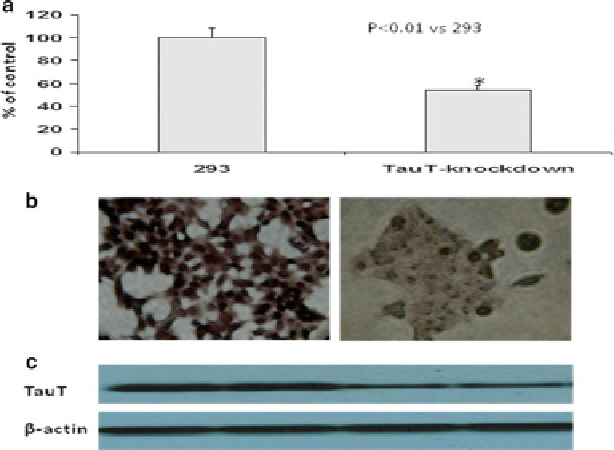Biology Reference
In-Depth Information
Fig. 28.1
To select the shRNA-induced TauT-deficient 293 cell line, taurine uptake was measured.
The TauT-deficient cells exhibited a significant decrease in taurine uptake (
a
), which is reflected by
reduced
TauT
staining (
b
). This in turn reflects expression of the
TauT
gene (
c
). Thus, these results
confirm the success of shRNA-induced
TauT
knockdown in the 293 cells
confirmed such results. These results suggested that expression of
TauT
was sup-
pressed in the 293 cells by
TauT
shRNA.
28.3.2
Knockdown of
TauT
Signi fi cantly Suppresses
the Growth Rate of 293 Cells
Previous studies have shown that a TauT-deficient mouse has less body mass than a
wild-type control mouse (Heller-Stilb et al.
2002
; Ito et al.
2008
) , suggesting that
TauT
may play a role in cell proliferation. In this study, an equal number (1 × 10
4
) of
control and TauT-deficient 293 cells were cultured and counted every 3 days after
seeding. The results showed that inhibition of
TauT
significantly reduced the growth
rate of 293 cells in comparison to control cells over the course of 9 days (Fig.
28.2
) .
28.3.3
Decreases in
TauT
Expression Inhibit
Colony Formation and Wound Healing
To test whether RNA-mediated reductions in
TauT
levels could influence the
ability of 293 cells to form colonies in soft agar, an equal number (1 × 10
4
) of

Search WWH ::

Custom Search